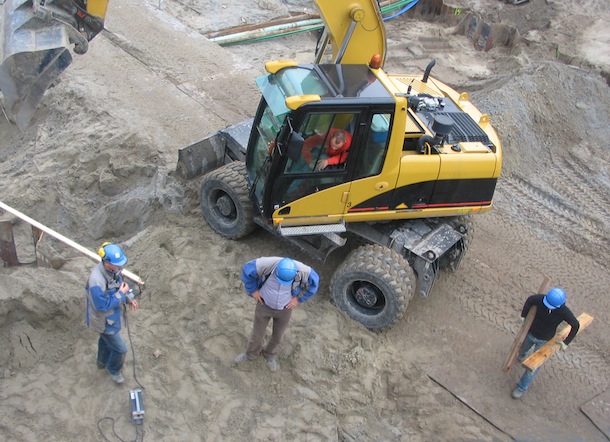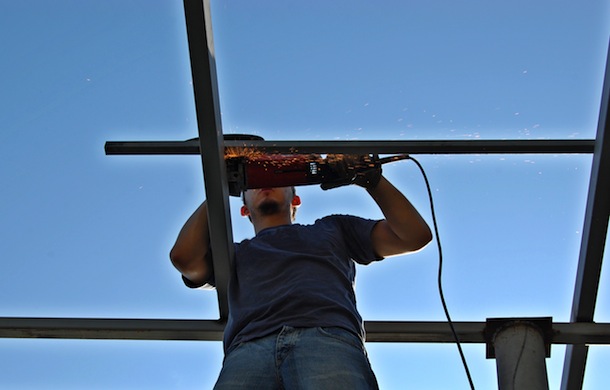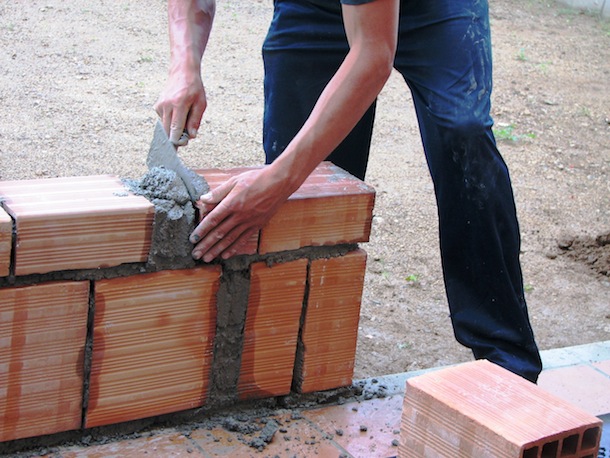Try to imagine: The U.S. auto industry, quickly emerging from a slump rivaling the one experienced by its home-building brethren, is set to grow by another million units in 2014, except for one problem—a worldwide steel shortage. Steel, next to healthcare, is the No. 1 cost component in auto-making. Aluminum and plastic have their roles, but steel rules for frames, body panels, and engine blocks. So how do the automakers respond to this shortage? Half complain bitterly about the inevitable price hikes while the other half ignores the problem, hoping somehow it will go away.
Try to imagine: A new meta-study with irrefutable data emerges and links manufactured nitrogen-based fertilizers to a plethora of environmental disasters and personal health calamities, so much that Congress is forced to ban them. These are by far the most-used fertilizers in North America (although almost unheard of before WWII). Crop yields per acre will drop by more than 50 percent. What does the agricultural industry do in the face of this debacle? Absolutely nothing.
Try to imagine: The oil business discovers it is about to run out of crude for refining. Wait! We’ve been through that one. During the ‘70s, the commonly held belief was that we had no more than 50 years supply left, and a global cataclysm was inevitable. Yet today those predictions seem laughable. We have so many sources of not just traditional oil but of rapidly emerging alternative fuels. The pundits were not lying; they simply based their predictions on the known science at the time and could not fathom the quantum advances made in the decades since. Twice as much horsepower on half the fuel and virtually no emissions? Airliners with triple the seat-miles-per-pound of Jet A? HVAC units with 95 SEER ratings? CFL and now LED lighting? Net-zero energy homes? Such things could not have been imagined. But these changes did not happen as a result of scientists and engineers sitting on their fannies moaning about the good old days of $0.25/gallon fuel and no regulators to tell you how to get oil out of the ground, ship it, and refine it. Nor did they just plow ahead, business as usual, hoping things would get better. It took commitment, imagination, money, and a lot of hard work to get from there to here.
Now imagine: One of the largest U.S. industries, a top contributor to GNP and perennial harbinger of economic fortune (or misfortune), discovers that the largest overall component in their product is seriously eroding, both in quantity and quality. They have a tough time finding it and when they do, the price is higher than the month before. The results include costly schedule delays, increases in direct cost, and compromised product quality, amounting to reduced profit for the industry and greater risk for the investors. Nothing about this shortage will get better soon. We are talking, of course, about home building and the critical labor shortage we face. So what is the home building industry doing about it? Despite the sporadic efforts here and there by a few enlightened organizations, when we consider the magnitude of the problem the conclusion is unavoidable. We—the home building industry—are doing virtually nothing.
The college con
I recall vividly 15 years ago when my oldest son attended his first college night at the local high school. Every private and public school in Michigan was there, along with many from the neighboring states. Everyone was nervous and excited, most students and parents having drunk the academic Kool-Aid that the college that accepted you not only determined your career, but also whether you should bother consuming oxygen on the planet. I stood in a corner watching the frenzy; the students like bees flitting from flower to flower as they toured the booths with their smiling representatives. The school principal, Ted, soon sought out the same corner to escape the fray.
Ted asked what I thought of the event. Impressive, I told him, but I wondered why DeVry Tech and Wayne County Vocational and Technical College were not represented, not to mention the Army, Navy, Air Force, and Marines. Ted sighed, shook his head, and acknowledged that they should be and he understood my point, then added, “See Jason Collins over there, standing at the Eastern Michigan Booth? Not much for traditional school work, but I hired him for my yard last summer and he was amazing. He cut the grass, but he also fixed the sprinkler system, the mower, the trimmer, the overhead garage door, and my bicycle. That kid can do anything mechanical, and fast. His parents are pushing him to get some kind of IT degree. I just can’t see him in a cubicle staring at a monitor writing code all day. Now let’s say Wayne County Voc-Tech was here, and he went home tonight and said, ‘Mom! Dad! I’m going to be a heating and air technician!’ Jason might be happier, more productive, and probably make more money being an HVAC guy, but tomorrow his parents would be in my office raising hell.” I told Tom that although I understood his dilemma, he should invite the trade schools anyway and deal with the flak. “One thing his parents aren’t considering,” I suggested, “is that it’s damn hard to outsource the installation or repair of a furnace.”
That year, out of my son’s senior class of 347 graduates, 335 went to college—97 percent. When I graduated from high school it was about 10 percent. I grant you that 10 percent was not nearly enough, but what portion of my son’s class should have gone to college and what percent would have been far better off, and happier, learning a trade, a technical skill, or going into the military and picking up some expertise there? We and our kids hear it preached constantly that the answer to health, happiness, and success is “College, college, college!” Politicians harp continually about programs to help kids pay tuition at colleges and universities, but they rarely give trade or technical schools so much as an afterthought. Kids are leaving college today with iffy job prospects and incredible loads of tuition debt. And former sure-things like law school have become a standing joke, with law graduates suing their schools for grossly misrepresenting employment opportunities. Meanwhile, the building industry, along with production and maintenance businesses of all types, scream for skilled trades and qualified superintendents.
Blue collar or blue ribbon?
What happened that got so many thinking that being a tradesman or mechanic is somehow a lower-order vocation than being a programmer, or sales manager, or accountant? The former are coming out of school making more money than the latter in most cases, and without the mountain of debt that may take 10 or 20 years to repay. With a trade or technical skill and any entrepreneurial talent, it is quite easy to grab your cell phone, put a sign on your truck, and get started. One good friend of mine, an electrical contractor, went straight to the steel mills after high school and learned the electrical trade. By 30, he started his own shop. Younger than me, he owns property in four states free and clear, including two vacation homes, and pretty much does whatever he wants. What does he know that I don’t?
It is impossible to address this problem without noting the current political climate toward immigration. The “Build bigger fences and throw them back” crowd gets the most airtime, and they wear their xenophobia as a badge of honor. George W. Bush tried hard to strike an immigration reform deal and was torn apart by his own party. Obama has pushed it but, despite a bipartisan agreement in the Senate and clear support (in polls) from the American public, it appears at this writing that the House will once again ignore the issue as 2013 closes. States such as Arizona and Alabama recently enacted laws that some believe are fair, and others consider draconian, but without question negatively impact the trade base. The reality is that immigrant labor, documented or otherwise, dominates foundation, flatwork, masonry, framing, drywall, and landscaping, and is a significant factor in roofing, siding, insulation, and flooring, among others. The last time I wrote about this subject I received a load of genuine hate mail, just for suggesting we do something about it. I don’t have an easy solution, but I do know we cannot continue on the path we’re on if we want to grow this industry effectively and efficiently. Doing nothing, or hoping someone else does, is a lousy strategy for success.
Tough questions

Where is the leadership from the national builders? Why aren’t the presidents of our biggest companies demanding congressional action on immigration policy in the short term and for vocational/technical development right after? This is one issue where we can get at least some bipartisan support. Can you, the national builders, really afford to just accept the lack of trades as a given, a problem that will somehow work itself out? There were Congressional hearings on the problem in April and June, yet I heard nothing about these until I specifically researched the issue. NAHB chairman Rick Judson, a private builder from Charlotte, testified in April: “Despite our efforts to recruit and train American workers through the HBI Job Corps program and other programs, our industry faces a very real impediment to full recovery if work is delayed or even canceled due to worker shortages. A new, workable visa program would complement our skills-training efforts within the nation’s borders, and fill the labor gaps needed to meet the nation’s housing needs.”
Ed Martin, president of both Austin-based Tilson Homes and the Texas Association of Home Builders, addressed the trade labor shortage issue in a June hearing. “With congressional attention shifting to immigration reform, I believe strongly that this debate provides an important opportunity for the country to implement a new market-based visa system that would allow more immigrants to legally enter the construction workforce each year,” Martin said. Great, but if there were any national builders involved, I could not find a record of it. So I call on the national builders to step up, put up some funding, form an industry-wide joint commission working with the NAHB, and attack this head-on. You have the most to lose, after all.
More leadership required

Are we seeing enough leadership from the National Association of Home Builders? Testimony at Congressional hearings is important and support for immigration reform is critical, but immigration reform is stalled in the House. So why is NAHB not actively engaging its 140,000 members to write our Congressional representatives? Ed Judson testified about NAHB’s efforts to develop trades. The Home Builders Institute (HBI) is a marvelous program primarily engaged in bringing at-risk youth to building careers, but I had hardly heard about it until doing research for this article. On their website I see calls for mentors, but found almost nothing about involvement at the builder level. There should be builders participating in every city. The HBI, though, is a very small part of the solution. NAHB must take the leadership role through the local BIAs and HBAs and get involved locally on the specific issue of trade development. Imagine the impact if just 10 percent of NAHB members saw this as their responsibility and took action.
I also have to ask, where are the manufacturers and suppliers on the issue of trade labor shortages? Perhaps there is more going on than I know, but I haven’t seen it written up. I’d be pleased to hear from those who have accepted the challenge. How about the manufacturers of HVAC, plumbing fixtures, electrical equipment, windows, siding, lumber, and engineered wood products, among others? Just producing good instructions and hoping someone out there will install your product correctly is not enough. Are you actively supporting the recruitment of good people to the trades? That’s called risk management in my book.
Shouldn’t this challenge be front-page news, with something on it every time you open NAHB.org? On that front, the building industry media does not get a pass. Both Builder and Professional Builder and their companion websites should report on our progress or lack thereof, featuring constructive efforts to develop trades on a regular basis. For my money—and the builders’—it’s far more important than one more review of merchandising do’s and don’ts.
Face the facts
So take a hard look at yourself and your company. Face the brutal facts. We have a crisis and, unless you consider simply outbidding your competitors a good solution, we need to attack it. I ask you to send me specific examples of how you and your company are encouraging the development of trade contractors. Have you gone to the job fairs? College nights? Have you established a relationship with the voc-tech schools? Have you sat down with your trade contractors and asked how you can specifically help them recruit and keep solid people, the kind we need to build our homes? Are you working with HBI locally? Let me write about that here and hold those stories up for the industry to see. We need great examples to inspire builders, suppliers, and even high school principals to action.
As an industry, if we pulled together on this issue, we could make a positive impact in 12 months and change the entire picture within five years. My imaginings at the beginning of this article were absurd, weren’t they? There is no way the automotive, agricultural, or oil businesses would just sit back and do nothing in the face of a crisis threatening their greatest resource. So why is the home building industry behaving so absurdly? Let’s fix this. Now.
Scott Sedam is President of TrueNorth Development, an internationally known consulting and training firm based in the Detroit area. Scott welcomes your comments, questions, and feedback at scott@truen.com. Check out Scott’s LeanBuilding Blog on www.ProBuilder.com or www.TrueN.com, where you will find archives of past articles. To keep up with the latest on Lean Building & Design, join “The LeanBuilding Group” on www.linkedin.com.















